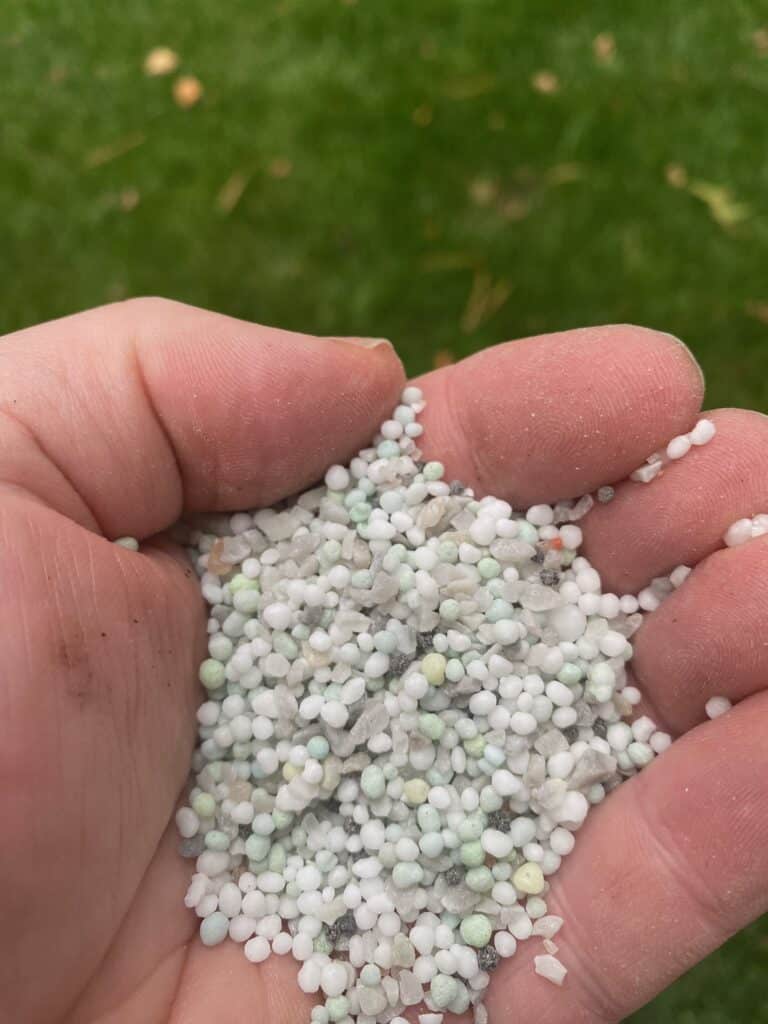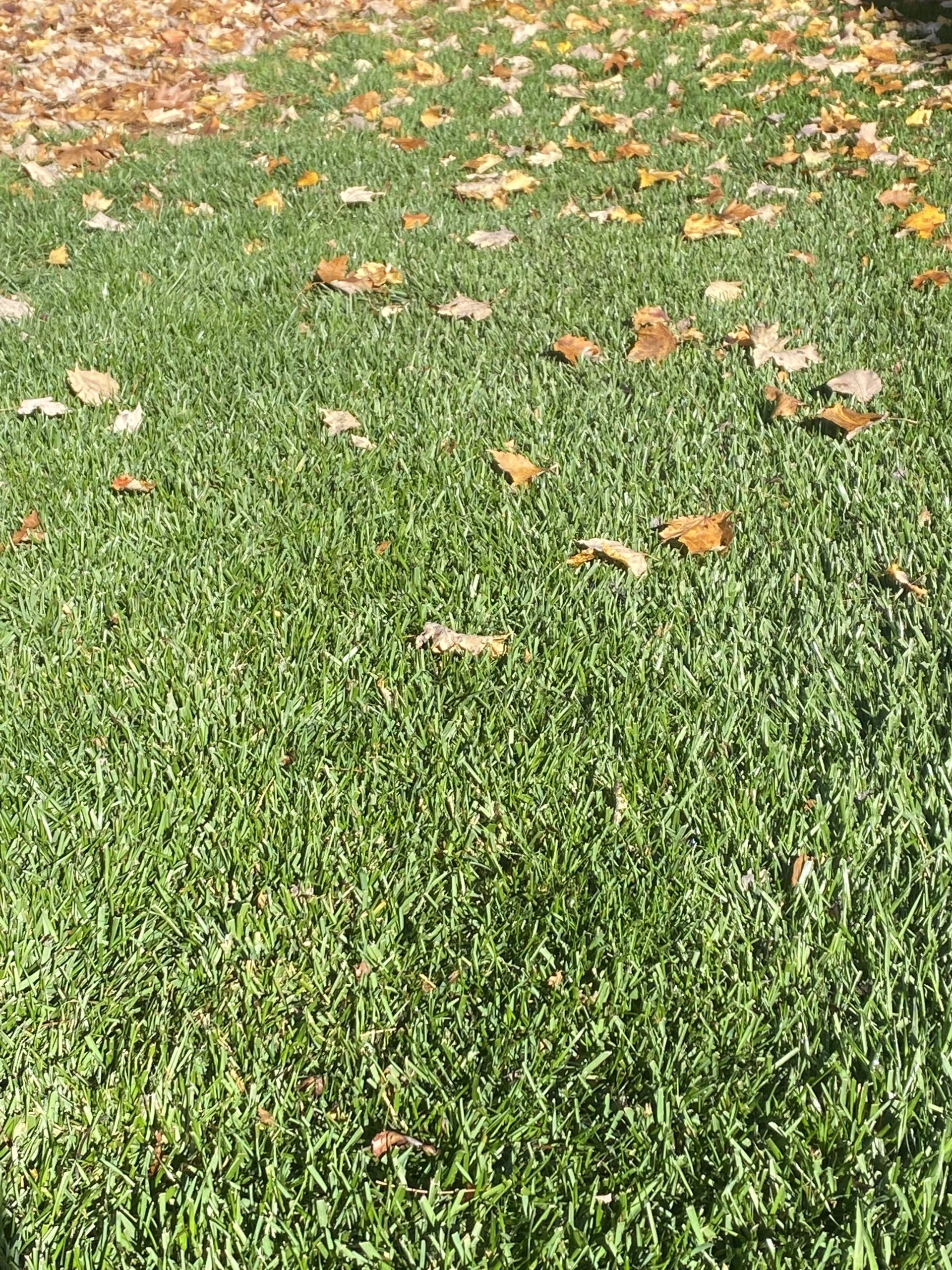A fall lawn fertilizer application can support the health of your lawn. Apply fertilizer in the fall to support a greener lawn, improve root growth, and reduce dead spots or lawn diseases. With a fall fertilizer application, you can ensure that your yard has the nutrients to withstand stresses associated with late fall, winter, and even early spring when the grass grows again after winter dormancy. Although the exact timing for fall fertilizer varies from region to region, this guide can help you fertilize your lawn according to your climate zone.
What’s The Difference Between Fall & Winter Fertilization?
I see these terms used interchangeably, but there is a big difference. The main differences between fall fertilizer and winter fertilizer are clear – to me it’s based on the timing and your fall plans (seeding vs. no seeding). Let’s jump in.
The Application Timing
A winter app, or winterizer, is the last app of the year. The winter application goes down just before the ground freezes and when the grass stops growing – the same time as your final mow of the season. Here in Massachusetts, I recommend applying a winterizer in November before Thanksgiving. This is to help feed the lawn over winter, but it is also used by the grass when it “wakes up” in the spring.
Fall fertilizer is applied during or after aeration and overseeding for the cool-season grasses.
- If seeding: Use a starter fertilizer – typically in September.
- If not seeding: Try nitrogen blitz in October.
The Type of Fertilizer (NPK)
The winter fertilizer should contain more potassium – like 18-0-10 or Jonathan Green 10-0-20. Potassium (K), is considered the “all-around” vitamin for your turf. Potassium helps it ward off diseases during the winter months and helps the lawns absorb more nutrients in the soil. The turf also uses potassium to make proteins and starches for winter storage.
A fall fertilizer application should also have higher nitrogen (N), but not necessary to apply higher doses of potassium (K). Generally, late summer is the best time to aerate and overseed, so this is the final fertilizer application that will push growth (applied before Halloween). We want to develop healthy turf and strong roots as it heads into winter.



Lawn Phix Lawn Care Plan:
- Early Spring: 16-2-3 with biosolids and poultry manure with Barricade pre-emergent (and liquid nutrition)
- Late Spring: 30-0-5 Duration with 0.15% Dimension and Acelepryn (and liquid nutrition)
- Early Summer: 5-4-3 organic with biosolids and poultry manure (and liquid nutrition)
- Fall Seeding: Starter fertilizer with overseeding – I use fertilizers like 18-24-12 or 19-19-19 at 3 lbs. per 1,000 sq. ft. (This is still technically late summer)
- Fall No Seeding: A fertilizer such as 24-0-5 with 20% (or less) slow release or a nitrogen blitz in October with 44-0-0 HCU.
- This gives the lawn one last push heading into Halloween and winter dormancy for most cool-season lawns.
- Winter application: November with a 10-0-20 at 4 lbs. per 1,000 sq. ft.
- While late November is still technically late fall, this is considered a “winterizer” as the nitrogen fertilizer is applied when the turf has stopped growing. The higher potassium is ideal for turf overwinter.
Why Fertilize Your Lawn in the Fall
Fertilizing your lawn in the fall is the best time of year for a fertilizer application because it helps your lawn build a more robust defense against winter weather extremes. It also supports healthy root growth, so you’ll likely see a lush lawn in early spring. If your lawn’s root system experienced damage from a hot, dry summer, a lawn fertilizer application in autumn can help it regenerate.
Prepare Your Lawn for Winter
We have an entire post designated to preparing your lawn for winter. But start by adjusting your mower height. Ensure you don’t mow the grass too short. As always, follow the one-third rule and never remove more than a third of the grass height.
Cool-season grass definitely benefits from a fall fertilizer application. In the early fall, you can apply a pre-emergent herbicide to reduce the risk for weeds in early spring (if not overseeding) including winter broadleaf weeds, poa annua, and more. Autumn is also an excellent time to repair bare spots in your yard. Seed bare spots and water deeply to encourage strong root growth before winter’s freezing temperatures.


HELLO MARK JUST NEEDED SOME GOOD GUIDES FOR MY LAWN FOR NEXT YEAR, WHICH IS IN SOUTH TX,